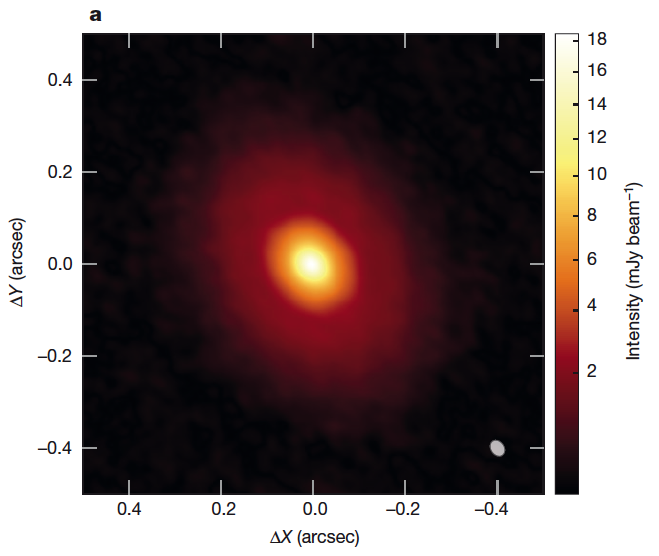 July 14, 2016. IFA News.
July 14, 2016. IFA News.
Prestigious NATURE published yesterday (July 14, 2016) an important discovery for the development of proto plnanetary discs and planet formation. The results belong to a study in which Claudio Cáceres, Héctor Cánovas y Matthías Schreiber, members of the Instituto de Física y Astronomía, IFA, participated. A snow-line is the region of a proto planetary disk at which a major volatile, such as water or carbon monoxide, reaches its condensation temperature. Snow-lines play a crucial role in disk evolution by promoting the rapid growth of ice-covered grains. Signatures of the carbon monoxide snow-line (at temperatures of around 20 kelvin) have recently been imaged in the disks surrounding the pre-main-sequence stars TW Hydra and HD163296, at distances of about 30 astronomical units (AU) from the star. But the water snow-line of a protoplanetary disk (at temperatures of more than 100 kelvin) has not hitherto been seen, as it generally lies very close to the star (less than 5 AU away for solar-type stars). Water-ice is important because it regulates the efficiency of dust and planetesimal coagulation, and the formation of comets, ice giants and the cores of gas giants. Here we report images at 0.03-arcsec resolution (12 AU) of the protoplanetary disk around V883 Ori, a protostar of 1.3 solar masses that is undergoing an outburst in luminosity arising from a temporary increase in the accretion rate. We find an intensity break corresponding to an abrupt change in the optical depth at about 42 AU, where the elevated disk temperature approaches the condensation point of water, from which we conclude that the outburst has moved the water snow-line. The spectral behaviour across the snow-line confirms recent model predictions: dust fragmentation and the inhibition of grain growth at higher temperatures results in soaring grain number densities and optical depths. As most planetary systems are expected to experience outbursts caused by accretion during their formation, our results imply that highly dynamical water snow-lines must be considered when developing models of disk evolution and planet formation. Image: credits Nature Magazine.
Associated link: Nature Magazine : Imaging the water snow-line during a protostellar outburst, .pdf file





